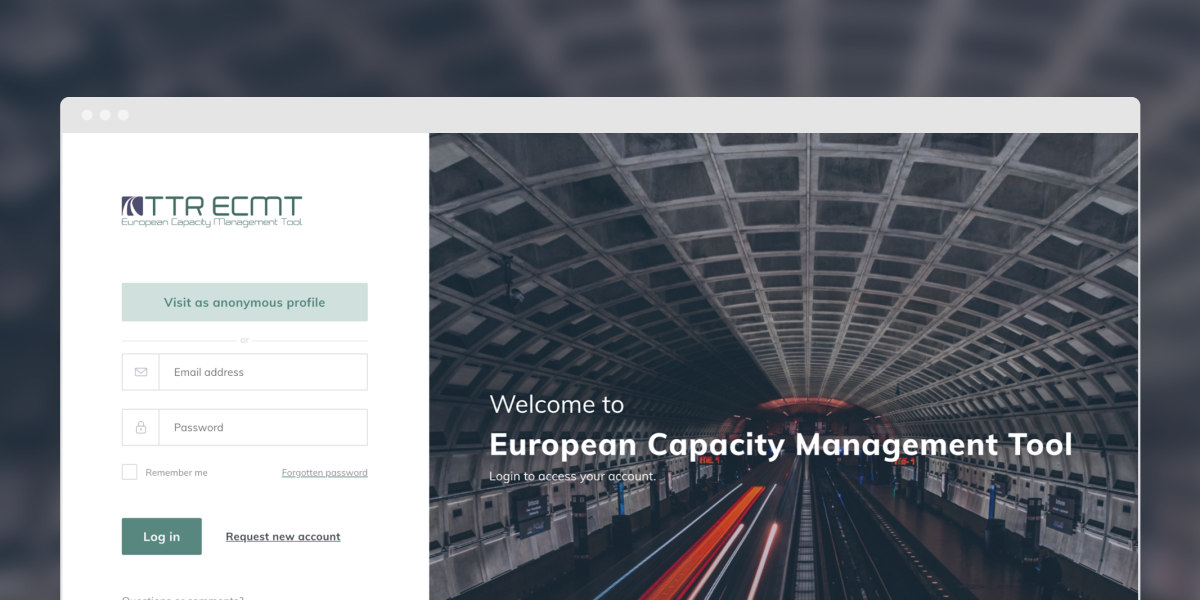
Introduction
What does the European Capacity Management Tool (ECMT) do?
The ECMT is a tool developed at the request of RailNetEurope, aimed at making railway track capacity planning/utilization monitoring simpler, clearer, and more understandable. The operation of the European railway network is handled by different companies in each country, while travel and transport within Europe often cross multiple national borders. As passengers or transporters, we expect that there will be no disruptions in transportation just because our destination is in another EU country.
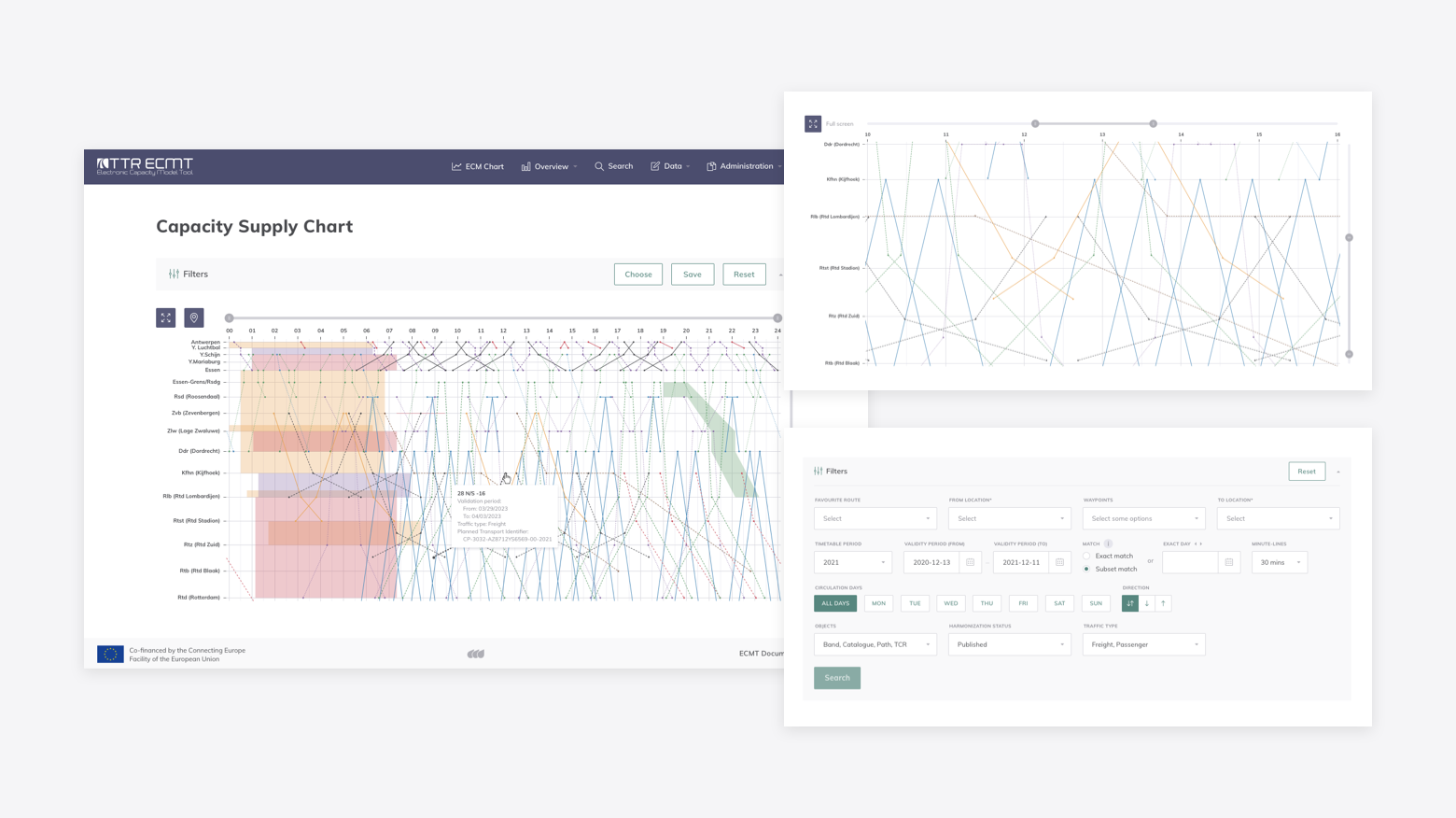
Project Background
The ECMT started as a pilot project in 2019 with the goal of providing infrastructure managers with a clear and transparent chart to show clients the available track capacity, or the planned maintenance and upgrades on the tracks. Initially, the system only included a few predefined lines and locations, where various (capacity-related) objects could be added manually or by importing Excel files.
We have been part of the project from the beginning, and our task was the design and development of the web application, which has since seen continuous expansion of its functionality. There are now not just one, but three different views available for visualizing track capacity, two of which also allow for long-term (multi-year) planning and presentation. The extent of planned maintenance and upgrades can now be displayed in a new chart that also supports long-term forecasting.
Instead of just a few predefined railway lines, the ECMT database today includes all companies involved in the operation of European railway lines, along with all locations and segments.
Current Development Process
Currently, a dedicated, multi-party team from both Integral Vision and RailNetEurope is working on the development. RailNetEurope's task is to gather development requirements from the application's users, representing dozens of infrastructure operators and hundreds of companies that use the tracks. These requirements are then sorted, coordinated, and compared with existing features before being forwarded to the development team.
Often, we at Integral Vision also provide new perspectives and raise questions that need further consideration, which means implementing a complex feature can take a long time. The so-called staging environment, which mirrors the live system, plays a particularly important role here, as this is where end users first encounter new features. They provide feedback on any difficulties, problems, or suggestions for further improvements based on their experiences using the features.
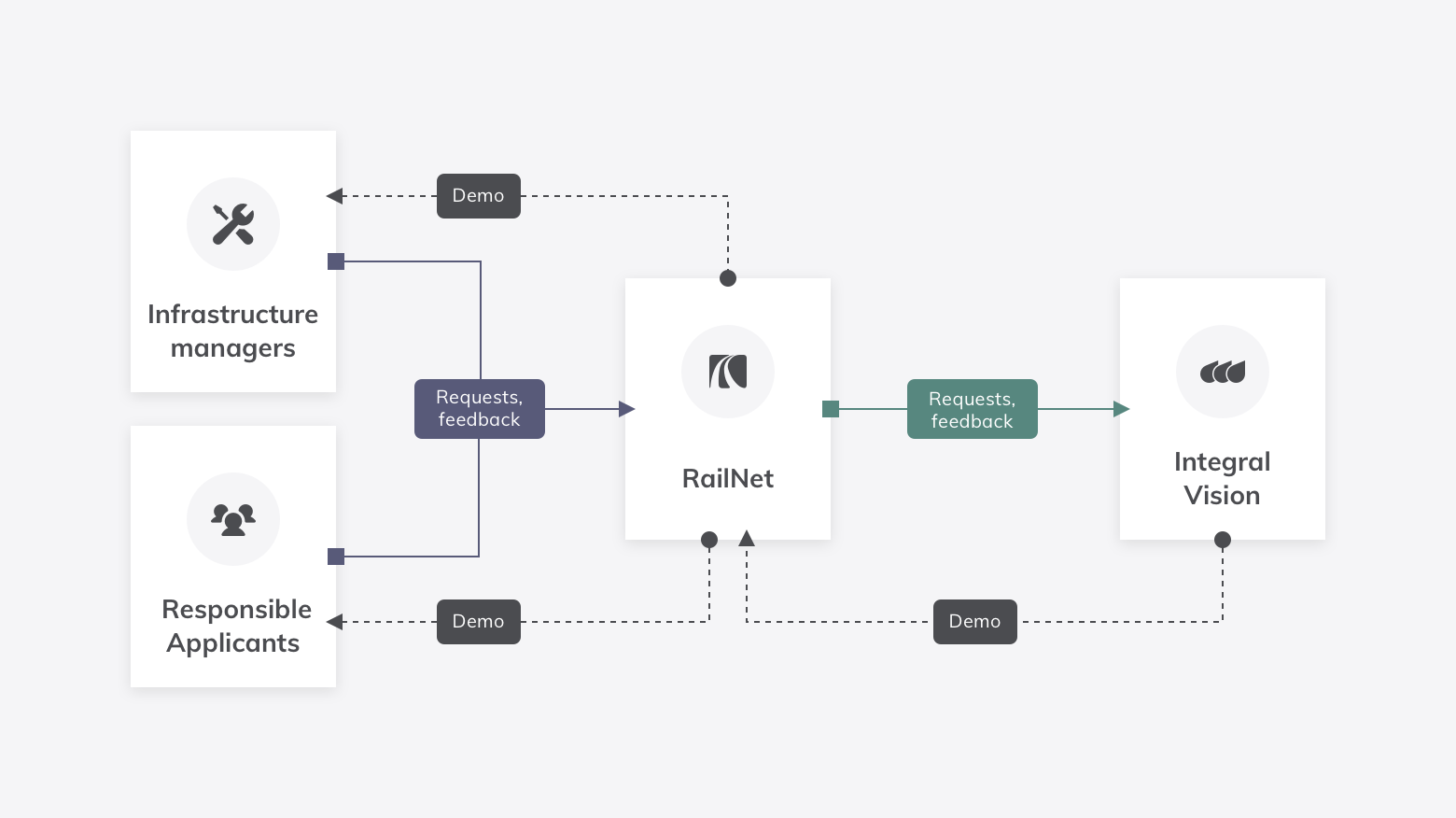
Innovative solutions
Capacity Visualization
Track capacity is displayed in four different views in the application. The first view typically shows data for the current year, where accurate information is available regarding planned trains, timetables, and shipments. Here, you can filter between any two stations over a given time period to view the capacity.
In two other display modes, the planned timetable is not accurate to the minute, so the schedule is shown broken down into hours: how many trains depart or arrive at the station within an hour. In one display mode, we only show occupancy and available capacity between two locations on a specific segment. In the other mode, it’s possible to view the planned capacity over a longer section. In both modes, users have a variety of filtering options to get more precise answers to their queries. Additionally, detailed data for each train is available from any of the views.
The fourth view is a map view that gives a general idea of the booked capacity.
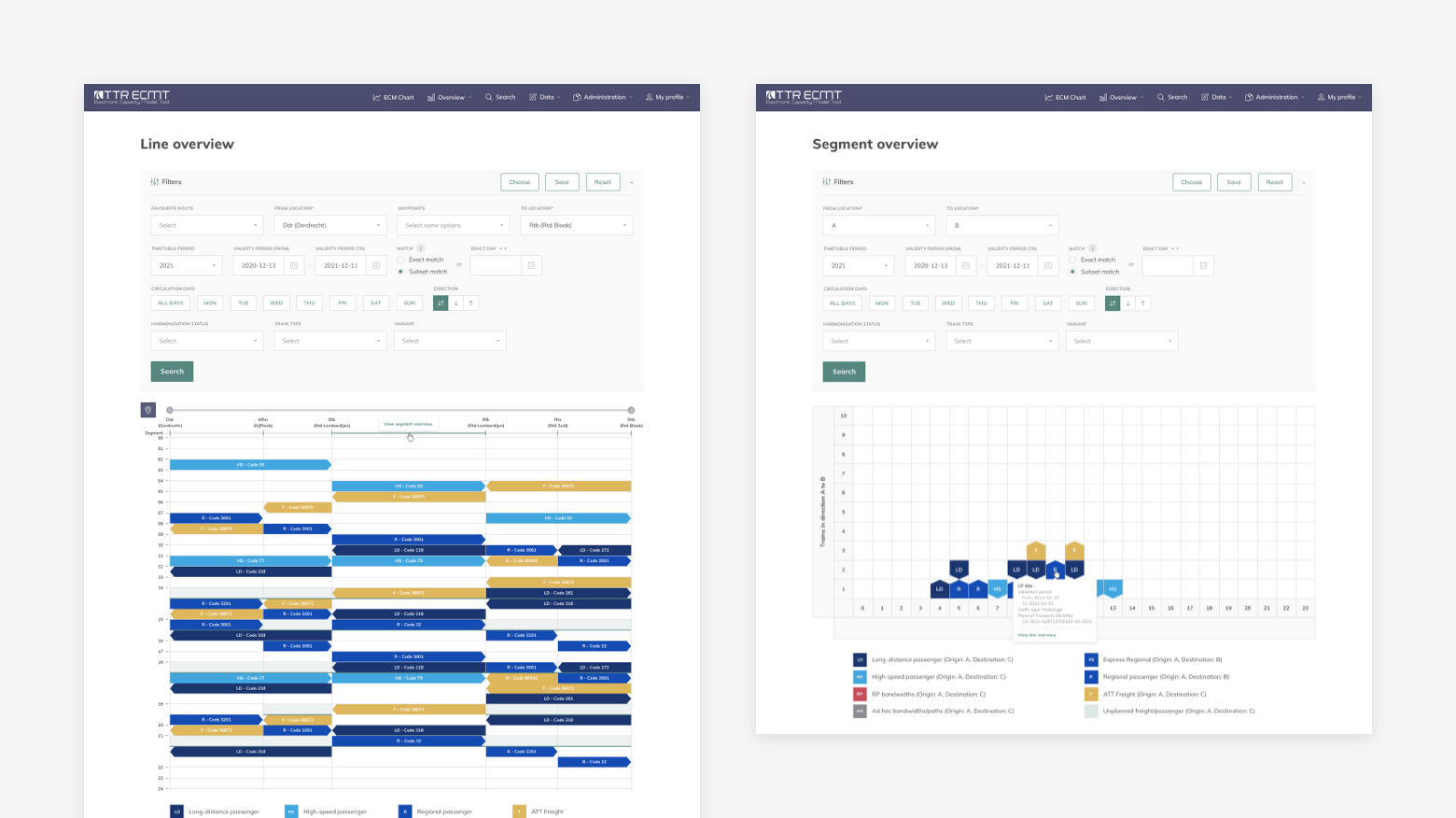
Track Capacity Planning - Workflow Support
Track capacity planning is a complex process. Infrastructure managers plan certain trains every year, which they can update by copying from previous years and adjusting to the calendar. Other trains are ordered by customers who now wish to integrate them into the timetable. Customers also have the ability to enter the desired train details via the interface and send them to the appropriate infrastructure managers (potentially across multiple countries' railway network operators) to request feedback. The application facilitates this communication, making it easier to match needs with available capacities.
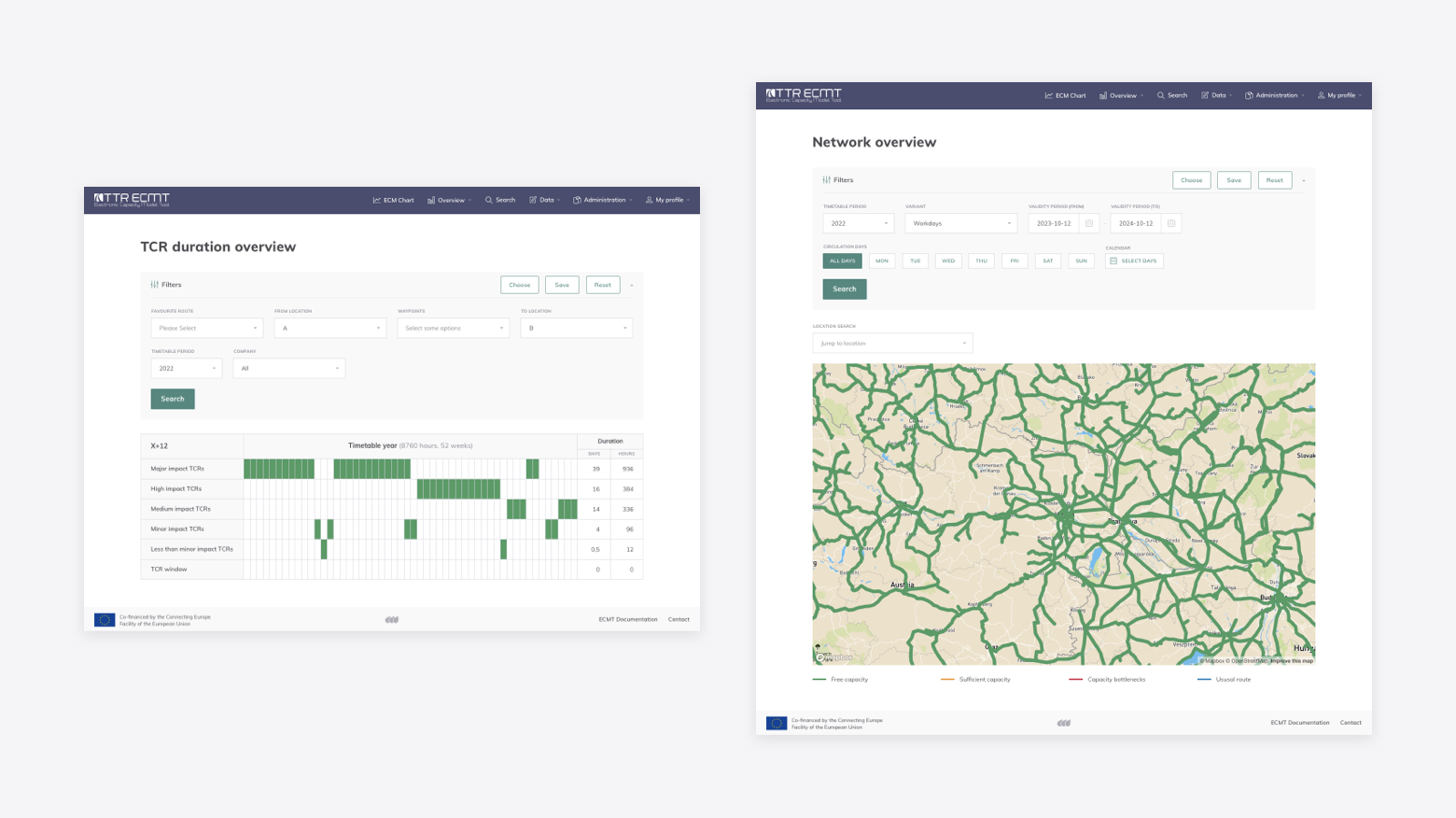
Communication of Planned Maintenance
Maintaining railway infrastructure is a major task for operators. It is often known years in advance which sections of track will be renovated and during which periods. Since such renovations can significantly affect passenger traffic and freight transport, the application provides a means to communicate these plans in advance, making planning easier.
Coordination of International Railway Timetables
Coordinating international railway timetables is complicated by the fact that operations are managed by different companies. The application enables infrastructure managers to coordinate trains passing through border stations during the planning phase. At these points, they can view each other's plans and, if necessary, consult at this stage. The application facilitates quick and efficient communication with automated lists and messaging functions.
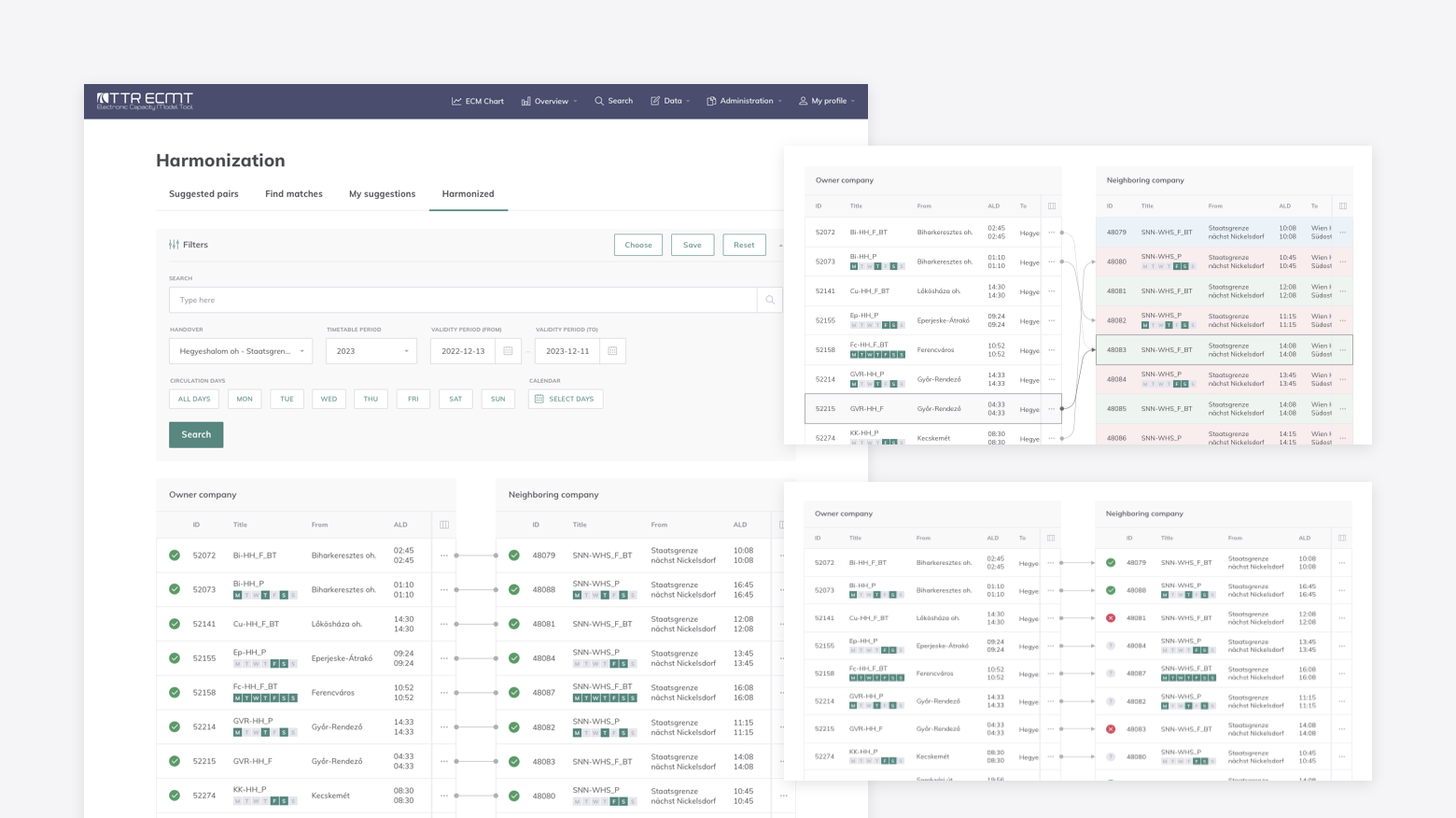
Integration with Other Information Systems
RailNetEurope operates a range of tools that serve the needs of infrastructure managers and their customers. Since efficiency is the goal, we strive to integrate and utilize data that already exists in other systems as fully as possible. For example, we use all data related to infrastructure (locations names, geodata, segments between stations). During daily synchronization, we update the changed entries in the database, which contains tens of thousands of records, so that users always work with the most up-to-date information. Additionally, information related to track maintenance is imported from another system already in use and made available to users. Thanks to a new development, plans related to objects will soon be created not only through the interface or Excel import but also via an API endpoint.
Related article: Take the train, not the truck
Share with your friends!